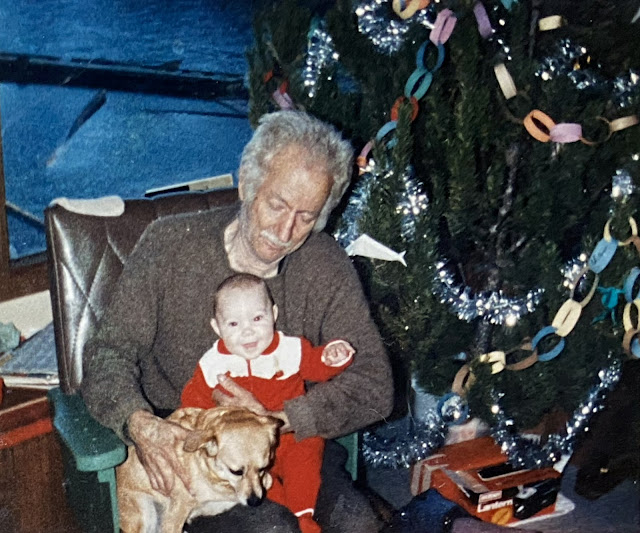NOTE: As submissions of new material, photos and artifacts of Nelson Dunkin begin to slow down, I will be posting on this blog less often, and only as new items emerge.
The following writing was Nelson’s attempt at what is called “Theodicy” (“justifying God”) to explain how a good, perfect, all-powerful and all-knowing God could permit evil to exist. Though he doesn’t quite say it, Nelson comes close to saying that evil is necessary for good to exist. It’s a slippery path, because this line of thought could lead one to believe in "necessary evil," or justifying an evil action to bring about good.
I’m sure this was not Nelson’s intention, but this little essay does demonstrate one of the problems with isolation. Sitting by himself some lonely night in front of his woodstove, and by the light of his kerosene lamp, Nelson took an idea and explored it, but had no one to counter his thoughts or raise the questions that he hadn’t considered.
Personally, I might have asked Nelson if there is any goodness apart from the character of God. For example, the Bible says that God is love. If pure goodness finds its source in God, evil isn’t necessary to contrast how good he is. But if God creates people with free will, the choice to reject him makes evil a potential element in the world.
The Law of Opposites and Comparisons:
If Up is Up There Must Be A Down and Infinite Distance All Around
The Elephant & The Mouse
The elephant: he is a very large animal but if all the animals were elephants how, without any comparison, how would we know if he were large or small?
Now a mouse comes bounding in and stands beside the elephant—it is then we can say: What a large animal the elephant is and what a small animal the mouse is.
Again we see a mountain and we say: What a great mountain that is, because it towers above all the surrounding hills.
Now if the earth were as smooth and as flat as a table-top and moles raised up their mole-hill—and the gardener came along and dumped a wheelbarrow of earth we could say: What a large mound.
So it is with Good and Evil. If there were no evil to contrast the good, how could there be any good?
Same as heat and cold—without heat how could there be cold and without cold how could there be heat?
Thus it is with Righteousness and Sin.
If there were no sin how would we know God to be righteous? All about us we see sin, suffering and sickness, and wonder and ask over and over how can God in his love and mercy tolerate such contradictions—the righteous suffering all manner of pain and sorrow whilst the evil live sumptuously in their wicked and ungodly ways?
Now suppose there were no devil or sin: How would we arrive at righteousness?
Suppose God had created the heavens and earth without sin to bolster righteousness: what need would there be for death and judgment and reward?
What need would there be for a Saviour?





































